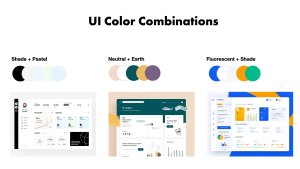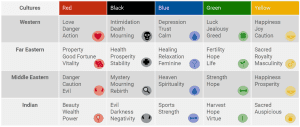
UX/UI Design: Powerful Techniques in Color Theory
Color is more than just a visual element in UX/UI design; it’s a powerful tool that can influence user behavior, emotions, and decision-making. In the creative brand landscape of Spain, where culture and aesthetics play a pivotal role, mastering color hypothesis is crucial. This blog delves into the principles of color hypothesis, its impact on UX/UI design, and how creative brands in Spain can leverage it to create compelling digital experiences.
Understanding Color Hypothesis in UX/UI Design
Color hypothesis refers to the theory and practice of predicting how colors will affect user interaction and perception within a digital interface. It involves understanding the psychological and cultural connotations of colors and strategically applying this knowledge to enhance user experience (UX) and user interface (UI) design.
For creative brands, especially in Spain, where design is deeply intertwined with cultural expression, mastering color hypothesis means more than just choosing aesthetically pleasing colors. It’s about aligning colors with brand identity, user expectations, and the emotional journey of the user.

The Psychological Impact of Colors
Colors have the power to evoke emotions and influence behaviors. Here are some examples of how different colors can impact UX/UI design:
- Red: Often associated with passion, urgency, and excitement. It can be used to draw attention to important elements like call-to-action buttons.
- Blue: Conveys trust, calmness, and professionalism. It’s a popular choice for brands aiming to establish credibility.
- Yellow: Symbolizes happiness and optimism but can also indicate caution. It’s effective in creating a sense of warmth and positivity.
- Green: Represents nature, growth, and stability. It’s frequently used in designs related to health, wellness, and sustainability.
- Purple: Associated with luxury, creativity, and mystery. It’s ideal for brands that want to appear innovative and sophisticated.
For a creative brand in Spain, understanding these psychological impacts is essential to tailor designs that resonate with local audiences.
Cultural Considerations in Spain
Spain’s rich cultural heritage influences color preferences and meanings. For example, red and yellow, the colors of the Spanish flag, evoke national pride and energy. Incorporating these colors into a design can create a sense of familiarity and connection with the audience.
However, it’s important to consider regional variations and target demographics. What works in Catalonia might differ from what resonates in Andalusia. Conducting thorough research on your target audience’s cultural background will ensure that your color choices are both relevant and effective. Also Read About Mastering UI/UX: Essential Principles for Flawless Design
Applying Color Hypothesis in UX/UI Design
- Define Your Brand Identity: Before diving into color selection, clarify your brand’s identity. Are you aiming for a modern, minimalist look or a vibrant, energetic feel? Your brand identity will guide your color choices.
- Understand User Preferences: Conduct user research to understand the color preferences of your target audience. Surveys, A/B testing, and usability studies can provide insights into which colors resonate best with your users.
- Create a Color Palette: Develop a color palette that aligns with your brand identity and user preferences. Consider using a primary color for your brand’s main identity, secondary colors for supporting elements, and accent colors for highlights and calls to action.
- Test and Iterate: Implement your color choices in your UX/UI design and conduct usability testing to gauge their effectiveness. Pay attention to user feedback and be prepared to make adjustments if certain colors aren’t achieving the desired response.
- Consider Accessibility: Ensure your color choices are accessible to all users, including those with visual impairments. Use tools like contrast checkers to confirm that text is readable against your chosen background colors.

Case Study: A Spanish Brand’s Success with Color Hypothesis
Let’s look at a hypothetical example of a creative brand in Spain that successfully applied color hypothesis in its UX/UI design.
Brand: VivaEspania, a travel app promoting tourism in Spain.
Objective: To create an engaging and culturally resonant user interface that appeals to both locals and international tourists.
Color Palette:
- Primary Color: Red – Evoking the passion and energy of Spanish culture.
- Secondary Colors: Yellow and Orange – Representing the warmth of Spain’s climate and the vibrancy of its festivals.
- Accent Color: Blue – Adding a calming contrast and symbolizing Spain’s beautiful coastlines.
Implementation: VivaEspania used this color palette across its website and app, creating a visually cohesive experience that feels uniquely Spanish. The red was prominently used in call-to-action buttons and highlights, driving user engagement. The blue provided a soothing balance, making the interface visually appealing and easy to navigate.
Results: After the redesign, VivaEspania saw a 30% increase in user engagement and a 20% boost in app downloads. User feedback indicated that the color choices made the app feel more authentic and enjoyable to use.
Conclusion
Mastering color hypothesis in UX/UI design is a critical skill for creative brands in Spain. By understanding the psychological and cultural impacts of colors, brands can create designs that resonate with their audience and enhance user experience. Whether you’re designing for a local or international audience, strategic color choices can make all the difference in creating a successful digital product.
For more insights into UX/UI design and creative branding, visit www.flykez.com.

